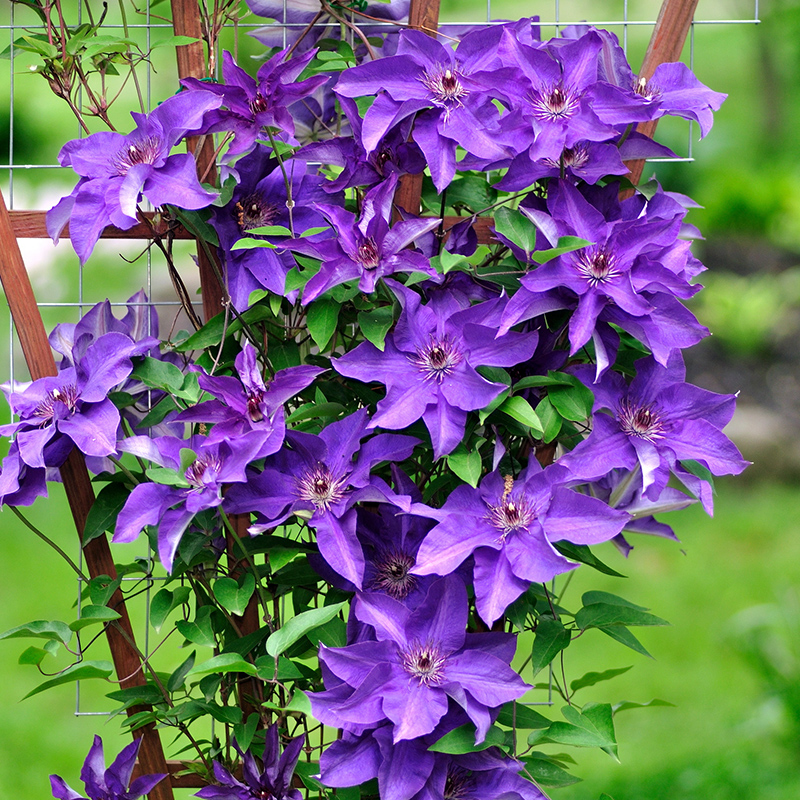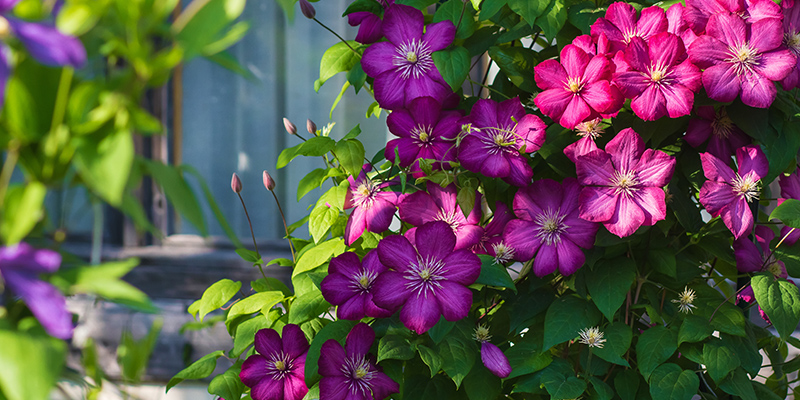
'Clematis are perfect for any garden and offer all year colour. They are great flowering plants for beginners - you can't 'grow' wrong!' David Smith, Horticultural Manager, Webbs Garden Centres.
Interesting facts for all the family
- Clematis derive from the same family as Buttercups
- Many varieties are from Chinese or Japanese origin
- Some varieties are very hardy and can live up to 25 years!
- Clematis are commonly referred to as 'old man's beard' due to their long feathery seed heads
- You may find a caterpillar or two having a good munch of the leaves.
When should you plant?
A great time to plant clematis is in spring or early- to mid-autumn as the soil is warm at these times. Water regularly to help good root establishment and growth.
Where to plant
Most Clematis will grow well in sun or partial shade, but flowering is normally disappointing in a very shady spot. Evergreen types need a sheltered spot as they can get winter damage in exposed areas. Clematis like their roots to be kept cool and moist, so plant the base of your Clematis in light shade or provide shading with other plants or a dressing of pebbles. Consider how you will support them - they will need something to twine around, like trellis or mesh attached to a wall or fence.

How to plant
Clematis are tolerant of most soil types, but grows best in deep, fertile, moist but well-drained soil. On heavy or sandy soils, dig-in some, farm yard manure or soil improver before planting to help soil structure. If planting against a wall or fence, dig the planting hole so that the root will sit around 30-45cm (1ft-18in) from its base,
Our pruning guide
- Flowering before early summer (June): do not prune.
- Flowering from late June onwards: prune in late winter (February).
After care
Clematis are thirsty plants, disliking soils that dry out during the growing season, so always keep well-watered.
We have many varieties of Clematis to get you started or to add to any mature garden.


